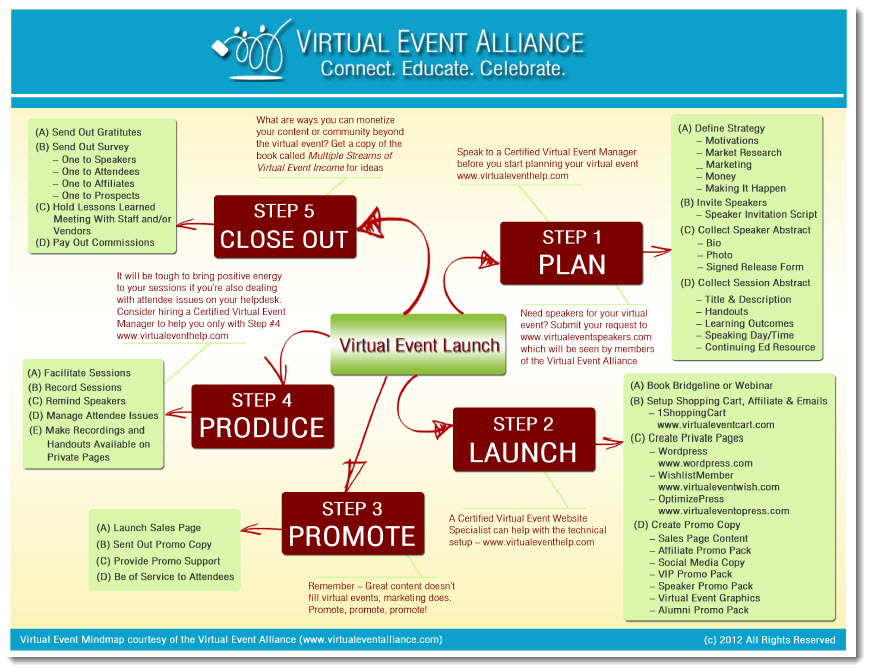I’ve started hosting ongoing preview calls limited to just 10 people. I call them huddles. I give 10 minutes worth of content, then I open the floor to questions for the remaining 20-minutes. I answer one question, then I move on to the next person.
Mary Pat revealed to me recently that due to my basketball experience, everything I do needs to be accelerated. And that’s why I love this Preview Call Refresh model. I can answer 4-5 questions in the 20-minute window and people walk away with action items.
On my recent “sold out” huddle, Brenda asked me a wonderful question. She asked:
Do your refreshed ideas work for free telesummits as well?
Before I answer Brenda’s question, I’m going to share with you some numbers from 2 actual telesummits.
I’ve changed the names and left out other identifiable details so I can maintain their privacy, but the statistics are real.
GEEK ALERT! I also dig deep into the numbers. My pal, Sarah Robinson once called me a numbers whiz because I was able to calculate how much people would owe Sarah if some stayed in the hotel room at BlogWorldExpo for 4-nights or just 2.
So, if you’re not a numbers person, you may find this overwhelming, but keep reading as I tie it altogether at the end.
Okay, Cory does a freemium telesummit, the one where email is the only currency needed to access the entire telesummit. He gets 1,500 people to sign up. Of these, 300 get the $67 upgrade so they can access the recordings.
One of my clients, who focused on the same niche market as Cory, does a premium telesummit. That’s the one where the attendee pays to access the telesummit.
My client gets 800 people on his preview call list. Of these, 80 people upgrade to one of the 3 plans priced at $197, $297 and $497. Half register at $197, half of that at $497 and the rest at $297.
Remember, to get access to my client’s telesummit, you have to pay using legal tender (money). With Cory’s, you pay with your email address.
So, let’s compare the 2:
- Cory’s conversion rate from free to paid is 20%. My client’s is 10%. So, Cory’s freemium model converts better.
- Cory makes $20,100 on his upgrades while my client makes $23,760. So, my client makes $3,000 more on less people.
- I know that both Cory and my client paid $5000 to host their telesummits. That means, Cory spent $16 to acquire one of the 300 people who bought the upgrade. My client spent $62.50. So, it cost my client more to acquire less people.
- However, my client’s ROI is better. If you subtract the amount paid to acquire an attendee by what the attendee paid, my client’s ROI ($234.50) is much higher compared to Cory’s ($51).
And the real kicker is that Cory will lose 70% of the remaining 1,100 who didn’t upgrade within 13-months (this according to statistics kept by one internet marketer).
In other words, in just over a year, only 330 people will remain on his list. The other 770 will move on to another adventure.
Even if my client met with the same fate (he loses 70% of the remaining 720 on his preview call list within a year), Cory will have only 100+ people more on his list than my client.
So, to answer Brenda’s question, while the freemium telesummit will give you a better conversion rate, the premium telesummit will give you a better return on your telesummit investment in the long run.
The other benefit of doing a premium telesummit is that you can upgrade your list to a high ticket program faster than with the freemium model (I’ll explain why in another email).
So, no, I’m not a fan of the freemium telesummit format. For the work you put in, you just don’t get a rewarding ROI. I encourage you NOT to do the freemium telesummit and instead, focus on launching a premium one.
Here’s a blog post by Victor Antonio on the discount deception that illustrates this further.


I really like two of your ideas in this post:
Making online calls smaller and more intimate. I think smaller numbers always lead to more learning and real movement, but in the virtual setting it is even more important. Either by having fewer people on the call, or using breakout groups to make the numbers smaller I think everyone gets more from the interaction.
Charging instead of free. I know I am getting overwhelmed by all of the free events. I often sign up then never attend. It is free so it gets pushed down my priority ladder, or I realize I didn't really have that big of an interest in attending.
When I pay that means I have thought hard about the event, know that it is something I want to attend, and I actually go to the event. Which means I am also a more interested member of that person's list and more likely to take further steps with them.
Jeremie
Jeremie, what an important point you raised. I completely forgot that when it's free, the priority to consume that content is lower than if the consumer paid for access. Wow! A lightbulb just went off for me. Thanks for making me aware of this point.
I'm really loving the small, ongoing preview calls that I'm doing. Instead of planning a big one where I blather on for 60-75 minutes in a lecture style environment, I share some tips for 10-minutes, then I open the phone lines for the remaining 20. So far, all 10 spots on each call has been filled and I'm able to get through at least 4 questions in the 20-minutes.
I heard about this format about 3-years ago by Alex Mandossian, so I can't lay credit to this format. It really isn't anything new, however, the small, intimate gathering helps me to be laser focused and helps me not to waste people's time. I just love it. This format definitely fits my personality.
Do you think with the use of breakout groups and discussion topics you could use the more intimate format with a larger group?
ie. Give a discussion topic. Break the larger call into groups of 10 to discuss amongst themselves. Then visit each group and spend time with them answering questions.
Maybe not a replacement for what is working, but a way to overlay a successful intimate/interaction technique into a larger setting. Creating these smaller group experiences amongst larger groups is a big area of interest for me, I would love your thoughts.
Jeremie
I spoke at a telesummit about a year ago where I was asked to prepare 15-minutes of content and 3 discussion questions even though the session was listed at an hour. I was like, “Wha?” But I did as the host asked.
When I got on the call, the focus was on breaking the group into smaller masterminds to talk about my content and the discussion questions I posed. Wonderful format. I wish more telesummit hosts did just that. So, Jeremie, is there a telesummit in your future using this as the format?
Further down the road maybe. My work right now is helping my clients see the value of this format, as well as the use of webinars versus straight telephone technology to provide even more value.
When I was teaching I used this format in my classroom setting, so I know how powerful it can be, now the fun is transferring those in-classroom experiences into virtual experiences and help people raise their virtual classes to a new and interactive level.
Jeremie, what an important point you raised. I completely forgot that when
it's free, the priority to consume that content is lower than if the
consumer paid for access. Wow! A lightbulb just went off for me. Thanks for
making me aware of this point.
I'm really loving the small, ongoing preview calls that I'm doing. Instead
of planning a big one where I blather on for 60-75 minutes in a lecture
style environment, I share some tips for 10-minutes, then I open the phone
lines for the remaining 20. So far, all 10 spots on each call has been
filled and I'm able to get through at least 4 questions in the 20-minutes.
I heard about this format about 3-years ago by Alex Mandossian, so I can't
lay credit to this format. It really isn't anything new, however, the small,
intimate gathering helps me to be laser focused and helps me not to waste
people's time. I just love it. This format definitely fits my personality.